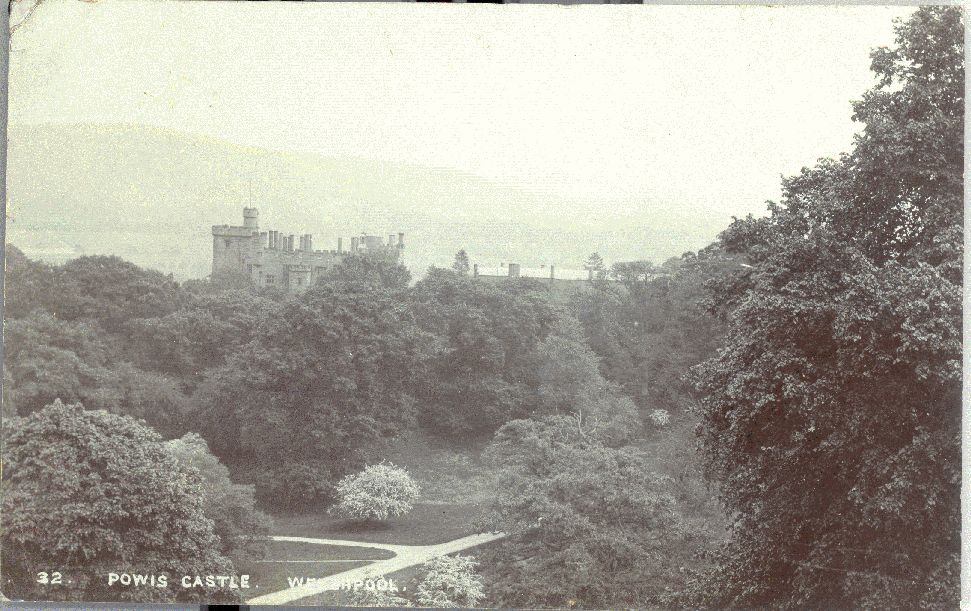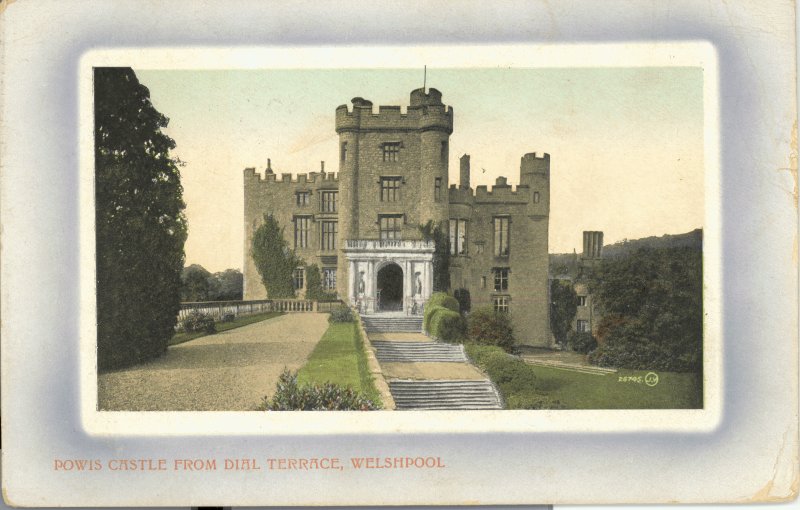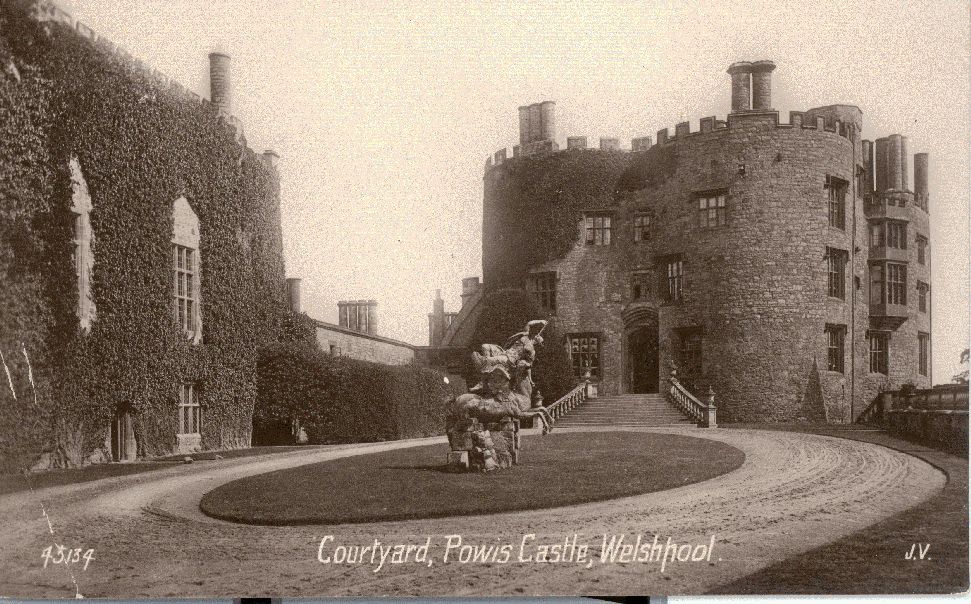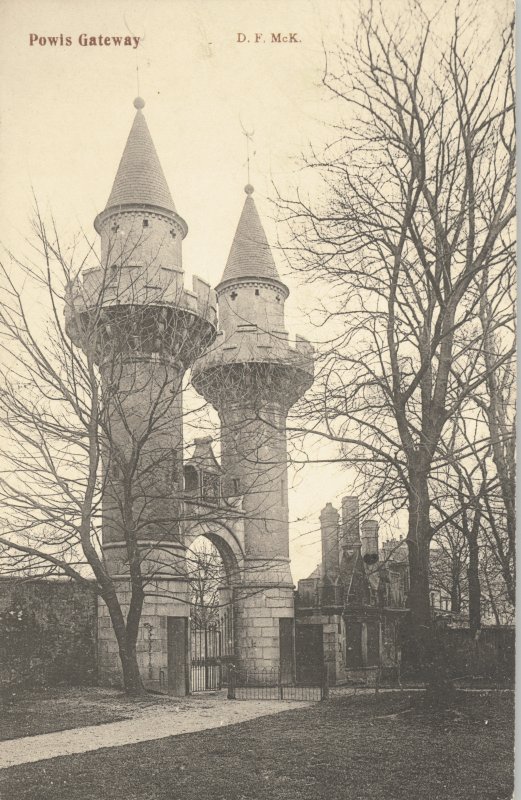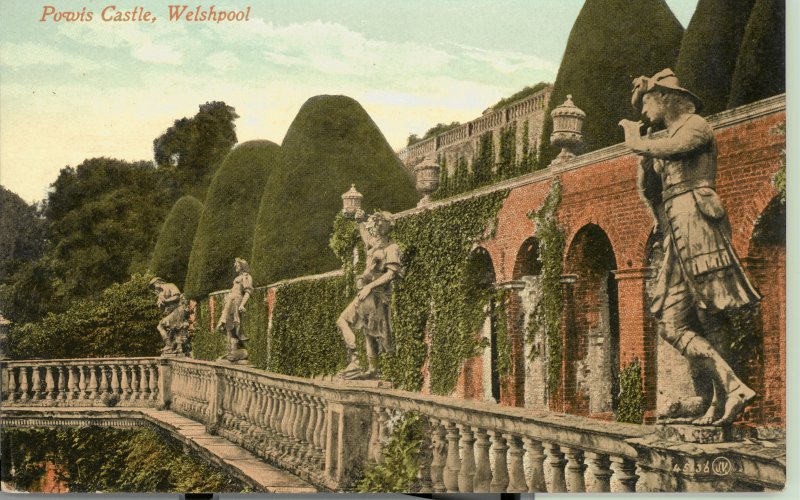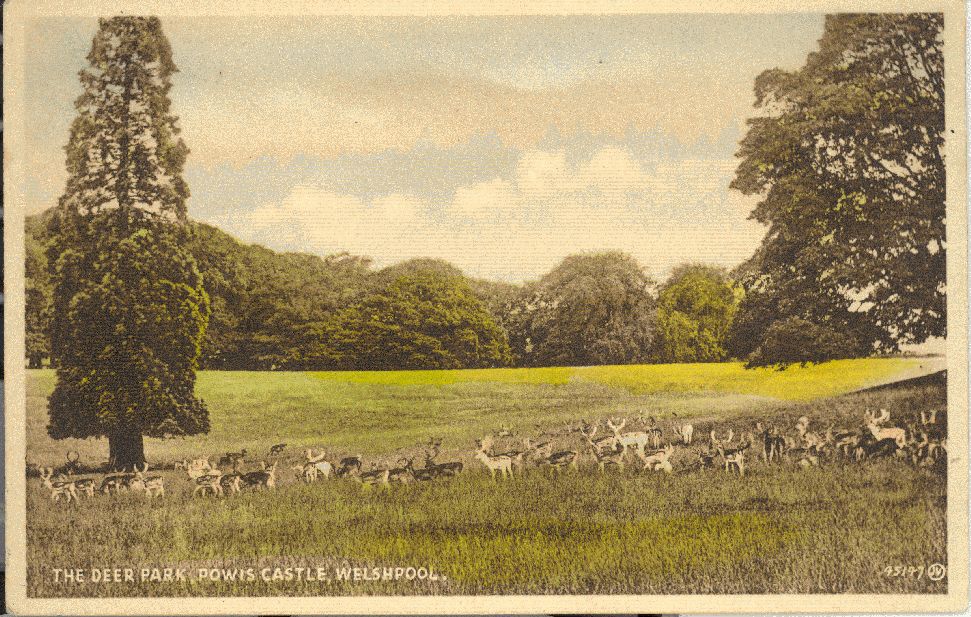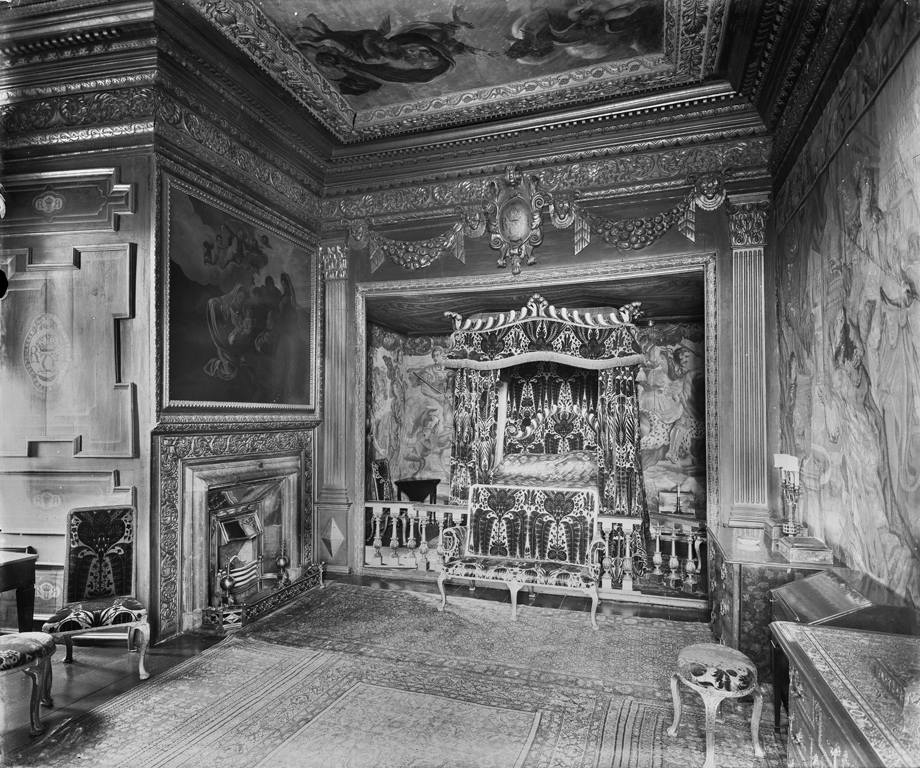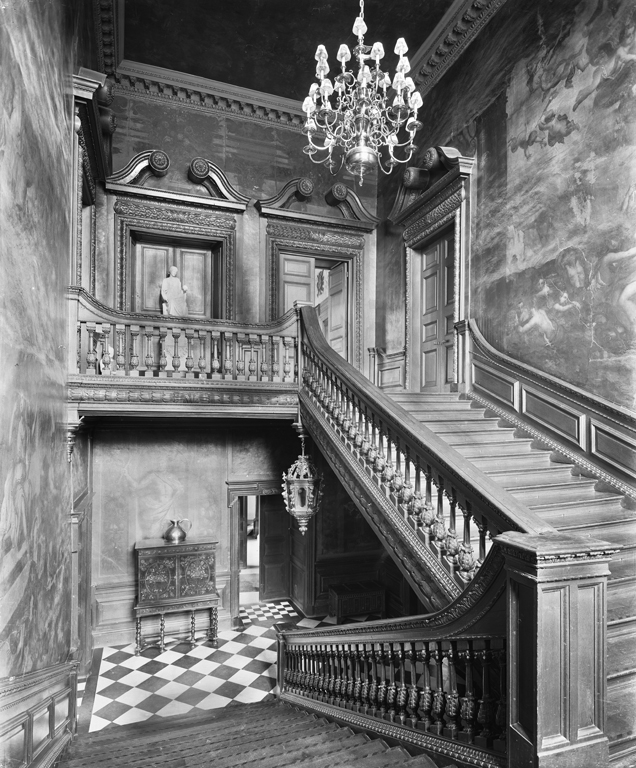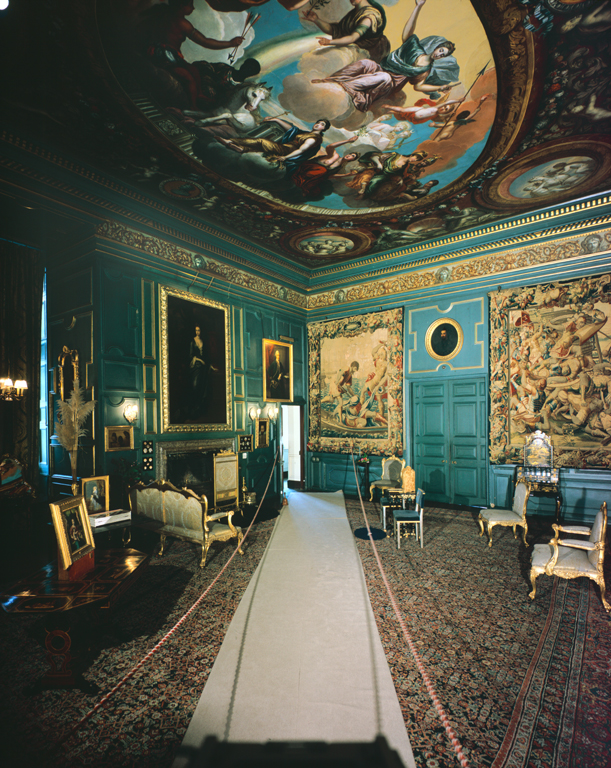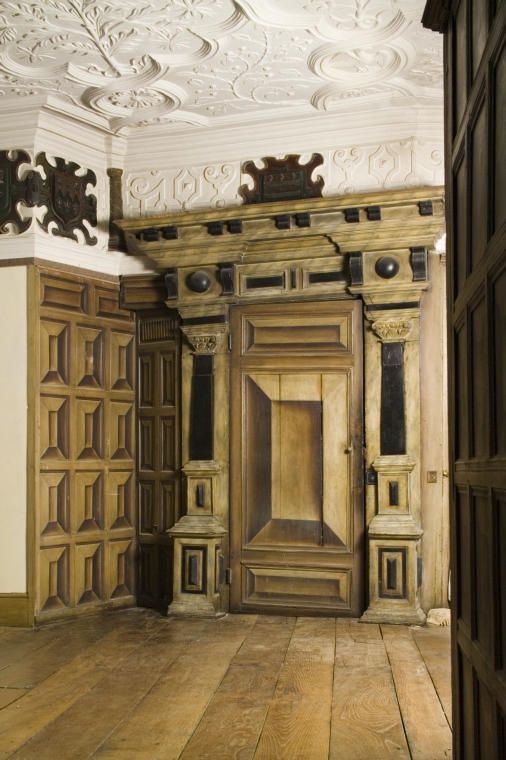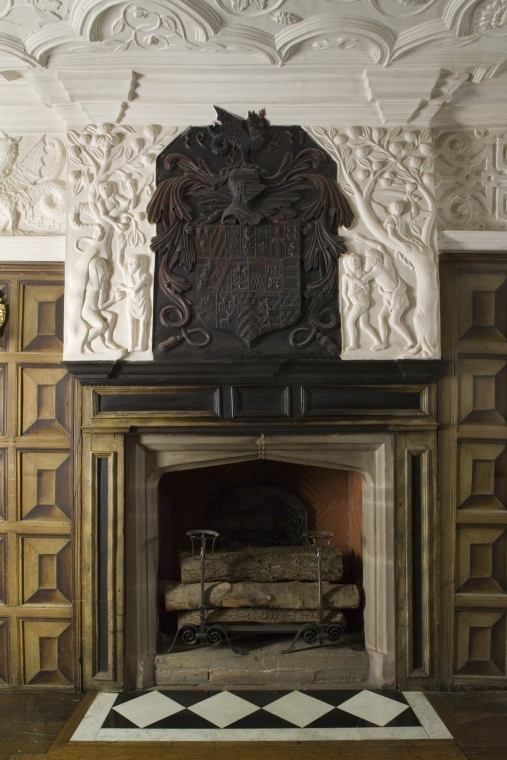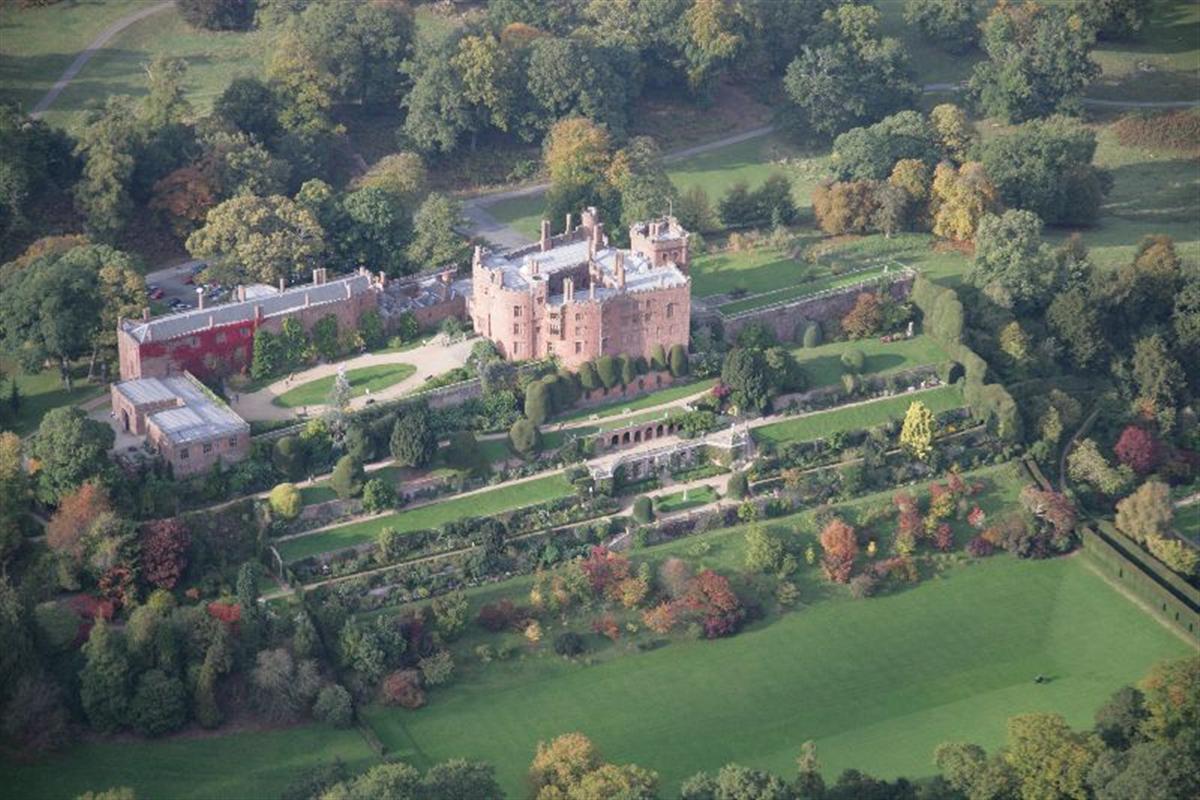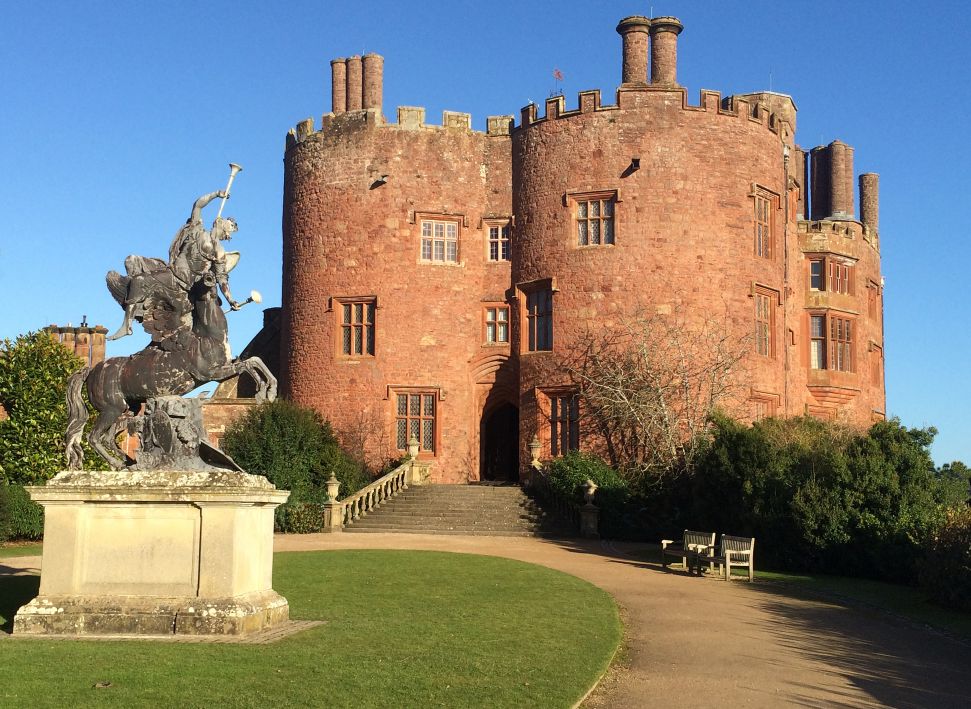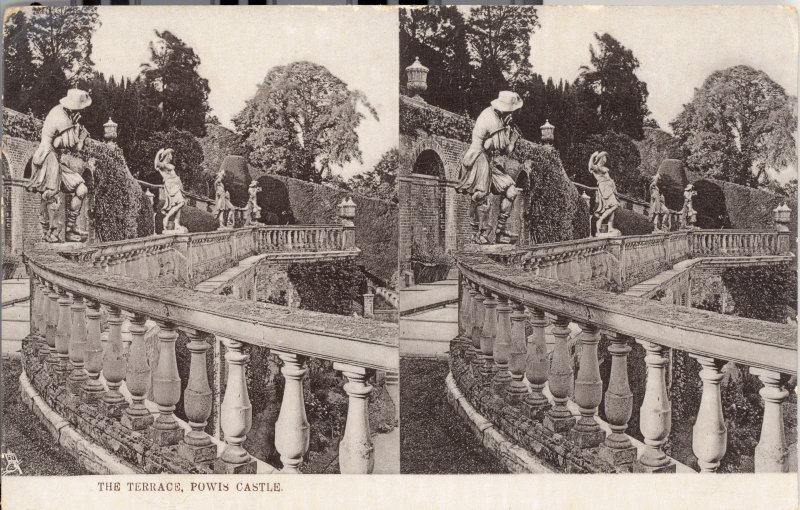Powis Castle - Overview
The first fortified structure that stood on this site was built by a Gruffudd ap Gwenwynwyn, the Lord of Powys Wenwynwyn, in the mid thirteenth century. The original castle was practically destroyed by Llywelyn ap Gruffudd, the ruler of Gwynedd, in 1274. Following the conquest of Wales by Edward I, Gruffudd was restored to his estates and construction of a new castle on the site was soon underway. Following the English Civil War, the castle frequently changed possession, but in 1722 it was returned into the hands of William, second Marquess of Powis, who embellished the castle and completed the terraces. The formal Baroque garden is one of only a few still existing in their original form in Great Britain.
Due to a succession of childless marriages, the estate and title passed to Edward Clive, the husband of Henrietta Herbert, a distant relative of the third and last Marquess of Powis. Edward Clive was the eldest son of Robert Clive, an agent of the East India Company who enforced British supremacy in the subcontinent. It is through this marriage that the extensive Indian art collection was later relocated to Powis Castle. By the time their son inherited the estate, long-overdue repairs at the castle and gardens took place. These improvements were largely paid for with the Clive fortunes amassed in India.
By the late eighteenth century, tourists payed frequent visits to the picturesque gardens and admired the art and portrait collection on display at the castle. During the Napoleonic Wars, several visitors were surprised to find a portrait and a bust of Napoleon on prominent display!
Powis Castle received its final alterations during the first half of the twentieth century and during the Second World War a girls’ school was evacuated to the castle. George Charles Herbert, fourth Earl of Powis, bequeathed the castle to the National Trust in 1952, but the family still retains the right to live at the castle.
Accounts of Travel
Reise durch England, Wales und Schottland im Jahre 1817, 1816
Samuel Heinrich Spiker (1786 – 1858)
Powis-Castle, der Sitz des Lord Clive, ältesten Sohnes des Grafen Powis, liegt ... auf einem Hügel, ungefähr eine Meile von der Stadt, in der Mitte eines großen Parks, dem es, wie allen Anlagen dieser Art in England, nicht an grandiosen Einzelnheiten fehlt. Das Castell oder Schloß selbst hat zwei Höfe, von denen der eine auf der Westseite von einem langen Gebäude begränzt wird, während auf der Südseite eine kurze Gallerie, und auf der gegen überliegenden Nordseite der eine Flügel des alten Castelles hervortritt, dessen übrige den zweiten viereckten, kleinen Hof umschließen. –
Das lange Gebäude, welches mit einem platten Dache versehen, und von unten bis oben dicht mit Epheu bewachsen ist, so daß die Fronte eine einzige grüne Wand bildet, enthält im zweiten Stockwerke einen prächtigen Saal von 6 Fenstern, der früherhin zum Ballsaal diente und mit schönen Gemälden behangen war, die man aber jetzt nach Walcot, dem Sitze des Grafen Powis, gebracht hat. –
Der Platz vor diesem Gebäude ist mit Kies belegt, und in der Mitte einem schönen ovalen Rasenfleck Raum gelassen, welcher mit der Epheubekleidung des Hauses sehr gut harmonirt. Auf der gegen Süden gelegenen Gallerie, unter welcher das Eingangsthor angebracht ist, steht eine kolossale, nicht übel gearbeitete, Gruppe von Sandstein, Perseus, welcher den Bellerophon besiegt. Die vierte Seite dieses Hofes ist frei und nur mit einem Steingeländer eingefaßt, über welches hinweg man in den großen, im alt-französischen Geschmack angelegten, aber sehr gut gehaltenen Garten hinabsieht. Dem Eingange gegenüber führt eine breite Treppe in das eigentliche Schloß, das einst einen stattlichen Anblick gewährt haben muß, jetzt aber durch eine übel angebrachte Modernisirung sehr verloren hat. Zwar stehen noch die Thürme auf den Ecken und die Zinnen auf den Mauern, allein die gothischen Spitzbogen der Fenster sind verschwunden und mit ihnen das Charakteristische des Gebäudes.
Die große Prachttreppe, welche zu dem oberen Geschosse führt, ist dem alterthümlichen Glanze, welchen das Innere des Schlosses noch immer behalten hat, angemessen. Am Fuße derselben sieht man eine schöne antike Marmorstatue, eine sitzende römische Dame, wahrscheinlich eine Kaiserin, darstellend: ein schöner kleiner Sarkophag, dem M. Caecilius von seinen Erben, Calvisia Zosime und M. Caecilius Calippus geweiht, dient ihr zum Fußgestell. Das große Deckenstück über der Treppe, den Triumph der Königin Anna darstellend, ist von Lanscroon, einem Gehülfen Verrio’s, und in dessen Manier gemalt. Eine niedrige Gallerie, im älteren Theile des Schlosses, ist mit Marmorbüsten der römischen Kaiser, fast alle Copieen, die zu beiden Seiten desselben aufgestellt sind, verziert. Drei Consular- oder Rednerstatuen, angeblich in Herkulanum gefunden, mögen antik seyn, sind aber so sehr restaurirt, daß man unmöglich über den Werth des wirklich Alten an ihnen urtheilen kann. –
Ein herrlicher 8-12 Fuß langer Tisch, von florentinischer Mosaik, mit Landschaften, Blumenstücken, und andern Verzierungen, in den mannichfachsten Steinarten, eingelegt, steht am Ende der Gallerie. –
Die moderneren Zimmer liegen jenseits der Treppe. In dem ersten von diesen fiel mir, sogleich beim Eintritt ein über dem Kamin stehendes Brustbild Buonapartes in seiner gewöhnlichen Uniform, grün, mit weißen Aufschlägen, auf, neben welchem am Fenster auf einem Tische eine kleine Marmorbüste desselben stand, Verzierungen, die ich schwerlich in dem Staatszimmer eines englischen Großen zu finden erwartet haben würde, die man jedoch in England sehr oft an ähnlichen Orten antreffen soll. –
Ein ziemlich gutes Bild, die Verkündigung, nach Caracci, ist die einzige Entschädigung für die Erregung des unangenehmen Gefühls, welches der Anblick jener beiden Gegenstände verursacht. –
Die neue Bibliothek, ein kleines modernes Zimmer, aus dem man eine schöne Aussicht über den Garten hat, fanden wir ganz mit französischen Büchern angefüllt, welche der so eben aus Frankreich zurückgekehrte junge Lord Clive theils bei Buchhändlern, theils auf der Versteigerung der Bücher Josephinens gekauft hatte. In dem zweiten Staatszimmer, das ziemlich geschmackvoll möblirt ist, hängen mehrere gute Bildnisse, z. B. das des berühmten Lord Herbert von Cherbury, des Biographen Heinrich VIII., ganze Figur – ein Bild des Robert Dudley, Grafen von Leicester, angeblich von Vandyke (wohl Copie) – eine Tochter des Herzogs von Northumberland und ihr Gemahl, von einem unbekannten Maler, aber gut gemalt – Lord Percy Herbert und seine Gemahlin, von Janssen. –
Das Staatszimmer, einst zum Empfange König Carls I. eingerichtet, aber nie von ihm bewohnt, da er nicht auf dem Schlosse erschien, zeugt von dem Reichthum des Besitzers von Powis-Castle: es ist ganz mit dunkelrothem, goldgestickten Sammt ausgeschlagen, und die Toilettengeräthe, welche noch unverrückt dastehen, sind von Silber und vergoldet. Die alte Bibliothek scheint mit älterer englischer Litteratur wohl versehen. Zu den Merkwürdigkeiten, die man hier zeigt, gehört das von dem berühmten Lord Clive, Gouverneur von Indien, aus diesem Lande mitgebrachte Modell eines Krieges-Elephanten, der ganz mit einem Schuppenpanzer umhüllt ist, einen Spieß an der Stirn, und Schwerter an den Hauzähnen befestigt trägt. –
Aus dem eigentlichen Schlosse tritt man durch ein Portal (neben welchem, zu beiden Seiten, in Nischen die Statuen der Könige Offa und Edgar, der einstigen Beherrscher dieser Gegend zu den Zeiten der Heptarchie, stehen) in den Garten, der, wie oben erwähnt, noch ganz nach alt-französischer, oder vielmehr nach italiänischer, Art angelegt ist. Die Aussicht von der oberen Terasse (von welcher breite steinerne Treppen in den Garten hinab führen) gehört unstreitig zu den schönsten in diesem Theile von England. Im Vorgrunde der prächtige Garten mit seinen grünenden Aloen, seinen Gängen, seinen Hecken, seinen Vasen und Statuen; im Mittelgrunde eine wohlangebaute, mit Dörfern besäete Ebene; zur Linken die Stadt Welsh-Pool; im Hintergrunde die Berge Moel y Galfa, Craig Breiddyn, und Cefn Castell, und auf der höchsten Spitze eines derselben ein hoher Obelisk, dem Seehelden, Lord Rodney, zu Ehren errichtet: alles dieß bildet ein Gemälde, wie man es sich nur für die Staffelei wünschen kann, und welches namentlich dadurch etwas Anziehendes erhält, daß die Anlage des Gartens etwas ganz Fremdartiges und Südliches hat.
Powis Castle, the seat of Lord Clive, eldest son of the Earl of Powis, is situated ... on a hill about a mile from the town, in the centre of a large park, which like other places of the same kind in England, is not deficient in grandeur. The castle itself has two courts, of which that on the west is bounded by a long building, while on the south side a short gallery, and on the opposite north side, one wing of the old castle projects, the remaining parts of this castle enclosing the second smaller court, which is of a square form.
The long building, which has a flat roof, and is from bottom to top so overgrown with ivy, that the whole front appears one green wall, contains in the second story a splendid room with six windows, formerly used as a ball room, and hung with beautiful paintings, since transferred to Walcot, the seat of Earl Powis.
The space in front of this building is laid with gravel, and room is left in the centre for a fine oval grass plot, which harmonizes very agreeably with the ivy covered walls of the house. In the gallery towards the south, under which is the entrance door, stands a colossal group, not badly executed in sand-stone, representing Perseus conquering Bellerophon. The fourth side of this court is open, and only enclosed by a stone balustrade, over which we look down on a large garden in the old French style, but in excellent order. Opposite to the entrance a broad stair leads to what is properly the castle, which once must have presented a very grand appearance, but has suffered much from the injudicious manner in which it has been modernized. The towers indeed still remain at the corners, and the battlements on the walls; but the pointed Gothic arches of the windows have vanished, and with them all that was characteristic in the building.
The great and splendid staircase, leading to the upper story, is suited to the ancient magnificence which the interior of the castle still retains. At the foot of it is a very beautiful antique marble statue, representing a Roman lady, probably an empress, seated; a pretty little sarcophagus, consecrated to M. Caecilius, by Calvisia Zosime and M. Caecilius Calippus, his heirs, forms the pedestal to it. The great fresco painting above the staircase, representing the triumph of Queen Anne, is by Lanscroon, an assistant to Verrio, and in his manner. A low gallery, in the more ancient part of the castle, is filled on both sides with marble busts of the Roman emperors, almost all of them copies. Three statues of consuls or orators, said to have been found at Herculaneum, may possibly be antique, but they have been so much restored, that it is impossible to decide as to the value of what is really old in them.
There is a noble table, [eight to] twelve feet in length ..., of Florentine Mosaic, inlaid with landscapes, flower pieces, and other ornaments, in stones of the most various descriptions, at the end of the gallery.
The more modern rooms are on the farther side of the stairs. I was immediately struck on entering into the first of these rooms with the appearance of a half-length figure of Bonaparte in his usual uniform dress, green with white facings, over the chimney-piece, with a small marble bust of the same person beside it on a table near the window, ornaments which I should hardly have expected to find in the principal room of an English nobleman; but which, however, are frequently to be met with in similar places in England.
A tolerably good picture of the Annunciation, after Caracci, affords the only compensation for the unpleasant feeling caused by the sight of these two objects.
The new library, a small modern room, from which there is a fine view of the garden, we found to be entirely filled with French books, which had been purchased by the young Lord Clive, then just returned from France, partly from booksellers, and partly at the auction of Josephine’s library. In the second state apartment, which is furnished in pretty good taste, there are several good portraits, and among others, that of the celebrated Lord Herbert of Cherbury, the biographer of Henry VIII., a whole length figure; a portrait of Robert Dudley, Earl of Leicester, said to be by Vandyke (probably a copy); a daughter of the Earl of Northumberland, and her husband, by an unknown artist, but well painted; Lord Percy Herbert,” and his lady, by Janssen.
The state-apartment which was once fitted up for the reception of King Charles I., but never occupied by him, as he did not make his appearance at the castle, proves the wealth of the possessor of Powis Castle; it is entirely hung with crimson velvet, embroidered with gold; and the toilet-utensils, which still remain unmoved, are of silver gilt. The old library appears to be well provided with old English literature. Among the curiosities shown here, may be reckoned the model of a war elephant, entirely covered with a scale coat of mail, and bearing a spear fastened, to the forehead, and swords to its tusks, which was brought home by the celebrated Lord Clive, governor of India, from that country.
From the castle, properly so called, we pass through a portal (where, on each side, are placed in niches, the statues of Kings Offa and Edgar, once rulers of this part of the country, in the time of the Saxon heptarchy), into the garden, which, as before-mentioned, is yet quite in the old French, or rather the Italian style. The prospect from the upper terrace (from which we descend by broad stone steps into the garden), may unquestionably be reckoned among the finest in this part of England. In the fore-ground we have the magnificent garden, with its verdant aloes, walks, hedges, vases, and statues; in the middle-ground, a well cultivated plain thickly covered with villages; on the left the town of Welsh-pool; in the back-ground, the mountains of Moel y Galfa, Craig Breiddyn, and Cefn Castle, and on the highest point of one of them a lofty, obelisk, erected in honour of the naval hero, Lord Rodney. These altogether form the finest picture for the Easel that can possibly be wished for, to which the garden, quite in a foreign and southern taste, communicates an additional attraction.
(Travels through England, Wales and Scotland in the Year 1816. Vol 2. London: 1820)
